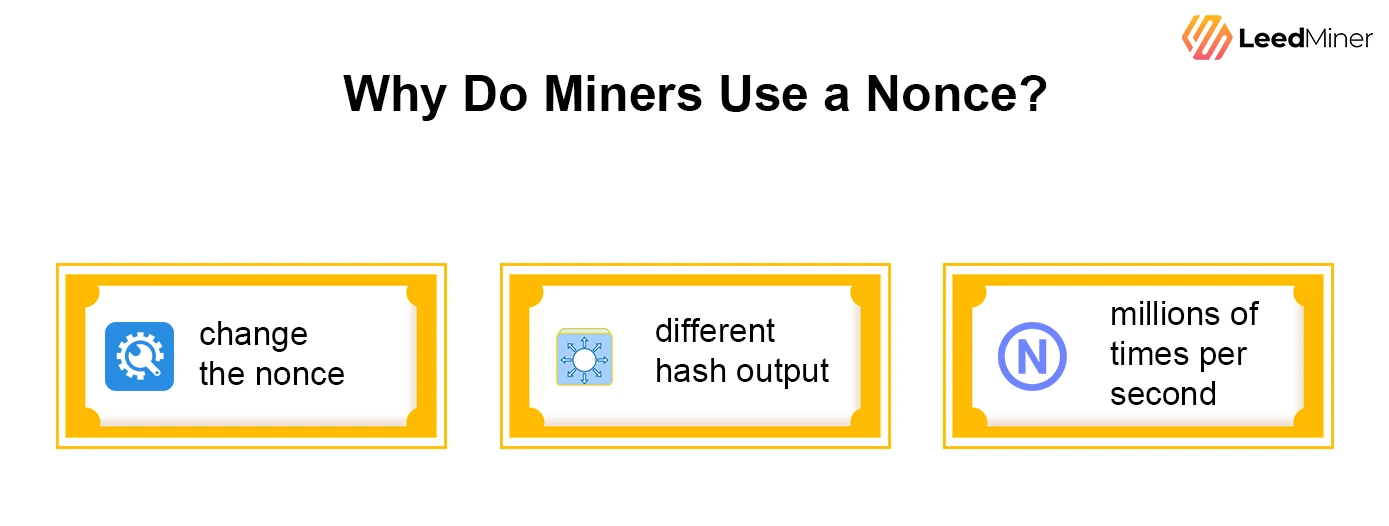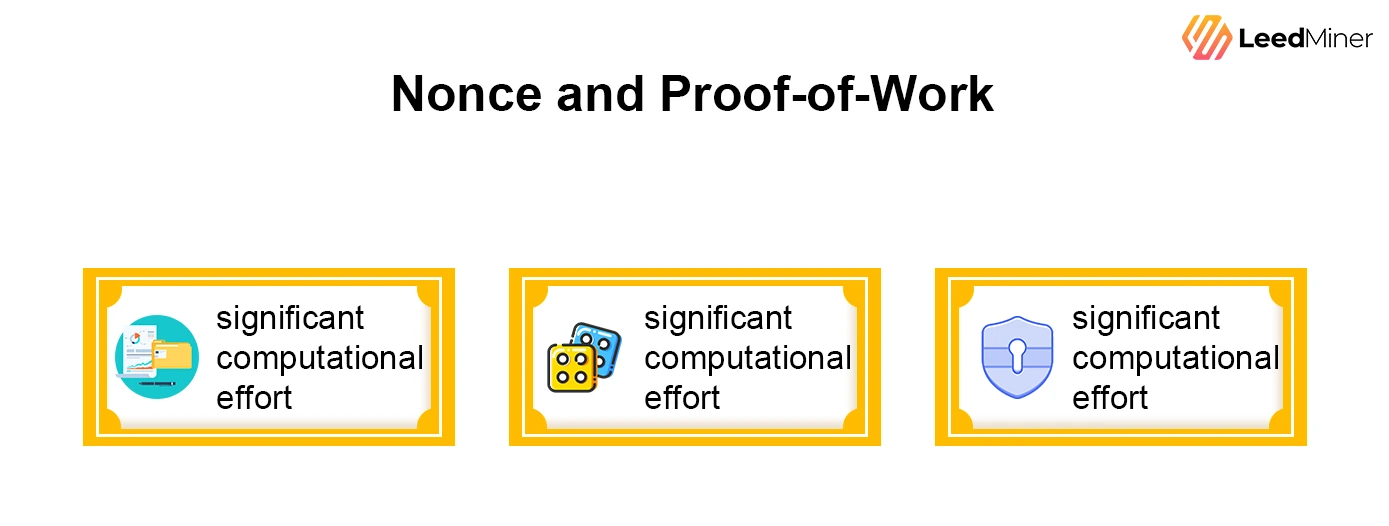SUMMARY
Cryptocurrency miningnonce. If you’ve ever wondered how miners “find” a new block, the nonce is the key player in this digital puzzle. In this article, we’ll explain what a nonce is, how it works, and why it’s essential to the mining process.
What Is a Nonce
The term nonce stands for “number used once”. In the context of blockchain mining, a nonce is a 32-bit (or larger) arbitrary number that miners change repeatedly to try and find a hash that meets the network’s difficulty requirement. In simpler terms: Nonce = A random number that miners change to try to solve a cryptographic puzzle.
Why Do Miners Use a Nonce

Mining in a Proof-of-Work
- Miners change the nonce with each attempt.
- Each new nonce produces a different hash output.
- They repeat this process millions of times per second until they find a valid hash.
How Does the Nonce Work in Mining
To understand the nonce’s role, you need to know what’s inside a block header. A block header typically includes:
- Version
- Previous block hash
- Merkle root (hash of all transactions)
- Timestamp
- Nonce
- Difficulty target
Mining Process Overview:
-
Miner assembles a block with valid transactions.
-
Miner starts with a random nonce.
-
Computes the hash of the block header.
-
Checks if the hash is below the target difficulty.
- If yes: block is valid and broadcast to the network.
- If not: increment the nonce and try again.
Since cryptographic hashes are unpredictable, the only way to succeed is by trial and error.
What Happens When the Nonce Space Runs Out
The nonce field in Bitcoin is a 32-bit number, which allows about 4.3 billion possible values. While that sounds like a lot, modern mining hardware
- Adjust the timestamp slightly.
- Modify the order of transactions (which changes the Merkle root).
- Alter the extra data in the Coinbase transaction (also called ExtraNonce).
These changes affect the block header, allowing miners to reset the nonce and continue searching for a valid hash.
Nonce and Proof-of-Work

The Proof-of-Work (PoW) mechanism depends entirely on this nonce-based process. It ensures that:
- Block creation requires significant computational effort.
- Finding a block is random and fair.
- The network stays secure, since an attacker would need massive hashrate to consistently guess correct nonces.
Every miner has an equal chance to succeed—it all comes down to luck, speed, and hardware efficiency.
CONCLUSION
Though it might sound like a minor technical detail, the nonce is a cornerstone of cryptocurrency mining. By repeatedly modifying this single number, miners around the world engage in a massive computational race to secure the blockchain, earn rewards, and uphold decentralization. In short: The nonce is the miner’s lever in the Proof-of-Work process—small in size, massive in impact.



